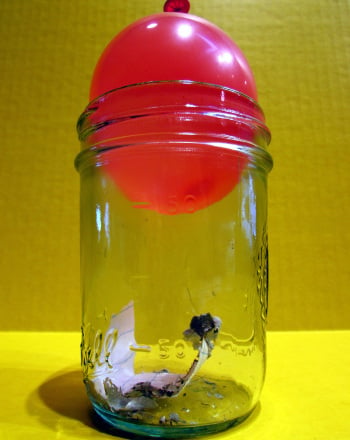Science project
The Pressure is On
Difficulty of Project
Easy
Cost
Less than $5.00
Safety Issues
None
Material Availability
Readily available
Approximate Time Required to Complete the Project
About an hour to collect the data; one day to prepare the science fair display
Objective
To determine if air pressure affects the way a ball bounces
Materials and Equipment
- Air pump with a pressure gauge
- Basketball
- Chair
- Measuring tape
- Masking tape
Background Information
Air has mass, weight, and volume, meaning that it takes up space. Air is made up of different gases, including nitrogen, carbon dioxide, water vapor, oxygen, and others. All of these gases are composed of particles or molecules, and they're all in constant motion.
As the molecules move about, they come in contact with surfaces of objects. The molecules push and press on those surfaces, exerting pressure on them. Air pressure allows your basketball to keep its round shape and remain hard and bouncy. If air escapes from the ball, the pressure inside the ball changes. Air pressure is measured using psi, or pounds per square inch. A basketball needs 8 psi to be properly inflated.
In this investigation, a basketball containing different psi is dropped to see how well it bounces.
Terms, Concepts, and Questions to Start Background Research
Terms
air pressure: the push that air has against all surfaces that it touches. The more air there is in a contained area, the greater the air pressure.
force: the capacity to change or use energy
energy: the capacity to work or use power
gravity: the force that causes all things to fall toward the center of the earth
inflate: to put air in
Concepts
A ball needs air inside of it to bounce. When a ball is dropped, the molecules squeeze together as it hits the ground and then spread apart as it bounces in the air.
Research Questions
- Why does a ball bounce?
- How high does a ball bounce?
- What affects how a ball bounces?
- How can you measure how high a ball bounces?
Experimental Procedure
- Gather the necessary materials.
- Hang the measuring tape on a wall next to an open area where a ball can be bounced. Set a chair next to the wall beside the measuring tape.
- Enlist the help of volunteer to help you mark how high the ball bounces.
- Use the air gauge to check the air pressure of the basketball. Record the result.
- Stand on the chair beside the measuring tape. Let the ball drop. Have the volunteer put a piece of masking tape at the highest point of the ball’s bounce. Record the result.
- Let out some air from the ball using pressure gauge. Record the result.
- Repeat Steps 5 and 6 until the ball no longer bounces. Be sure to drop the ball from the same height each time.
Bibliography
Articles
"That's The Way The Ball Bounces" by P. Doherty from the The Exploratorium Museum, San Francisco, CA. http://www.exploratorium.edu/sports/ball_bounces/index.html
“Air is Matter” at http://www.teacherdomain.org/resource/phy03.sci.phys.descwrld.air
Books
Branley, Franklyn M. Air is All Around You. HarperCollins Children’s Books: New York, 1962.
Education.com provides the Science Fair Project Ideas for informational purposes only. Education.com does not make any guarantee or representation regarding the Science Fair Project Ideas and is not responsible or liable for any loss or damage, directly or indirectly, caused by your use of such information. By accessing the Science Fair Project Ideas, you waive and renounce any claims against Education.com that arise thereof. In addition, your access to Education.com's website and Science Fair Project Ideas is covered by Education.com's Privacy Policy and site Terms of Use, which include limitations on Education.com's liability.
Warning is hereby given that not all Project Ideas are appropriate for all individuals or in all circumstances. Implementation of any Science Project Idea should be undertaken only in appropriate settings and with appropriate parental or other supervision. Reading and following the safety precautions of all materials used in a project is the sole responsibility of each individual. For further information, consult your state's handbook of Science Safety.













